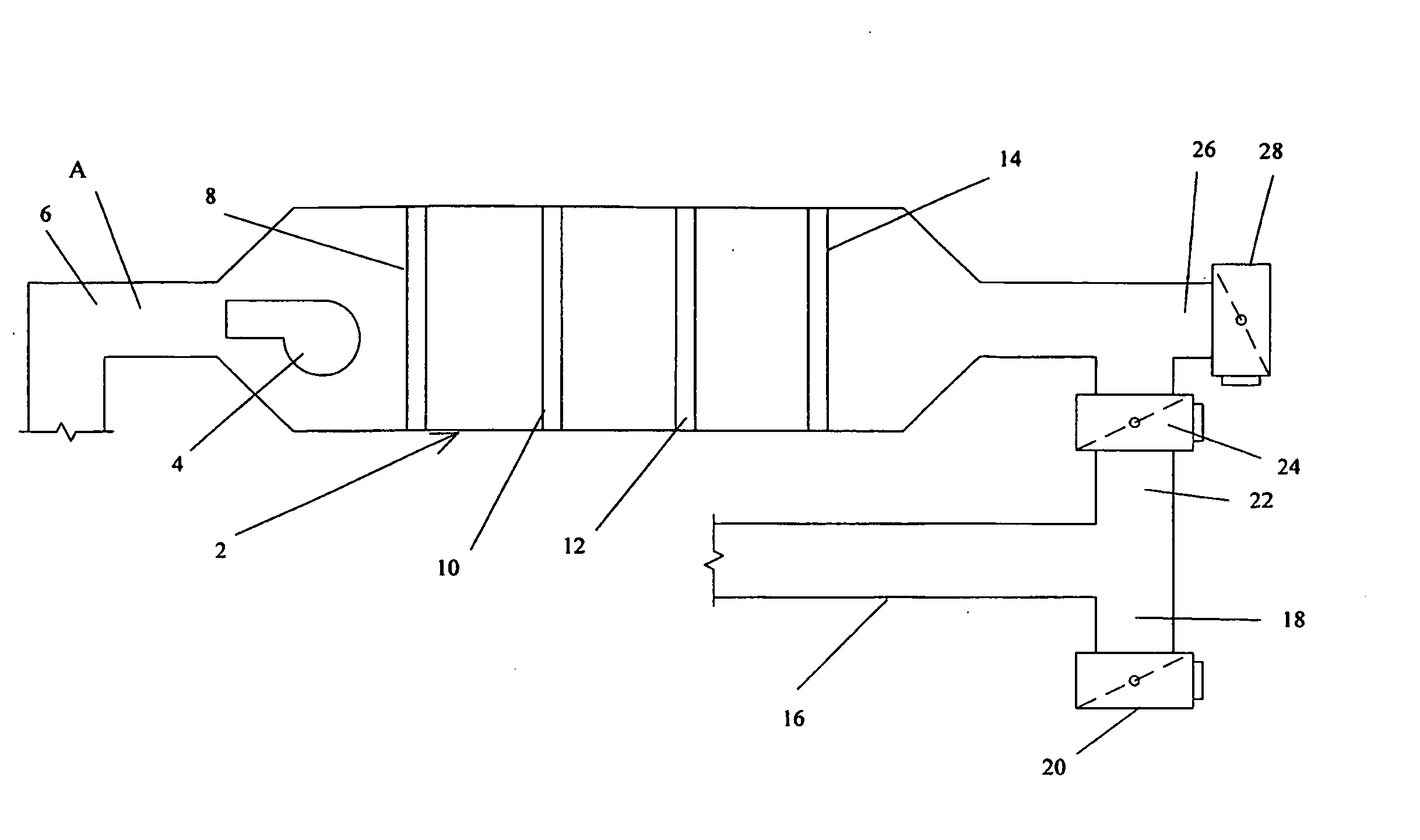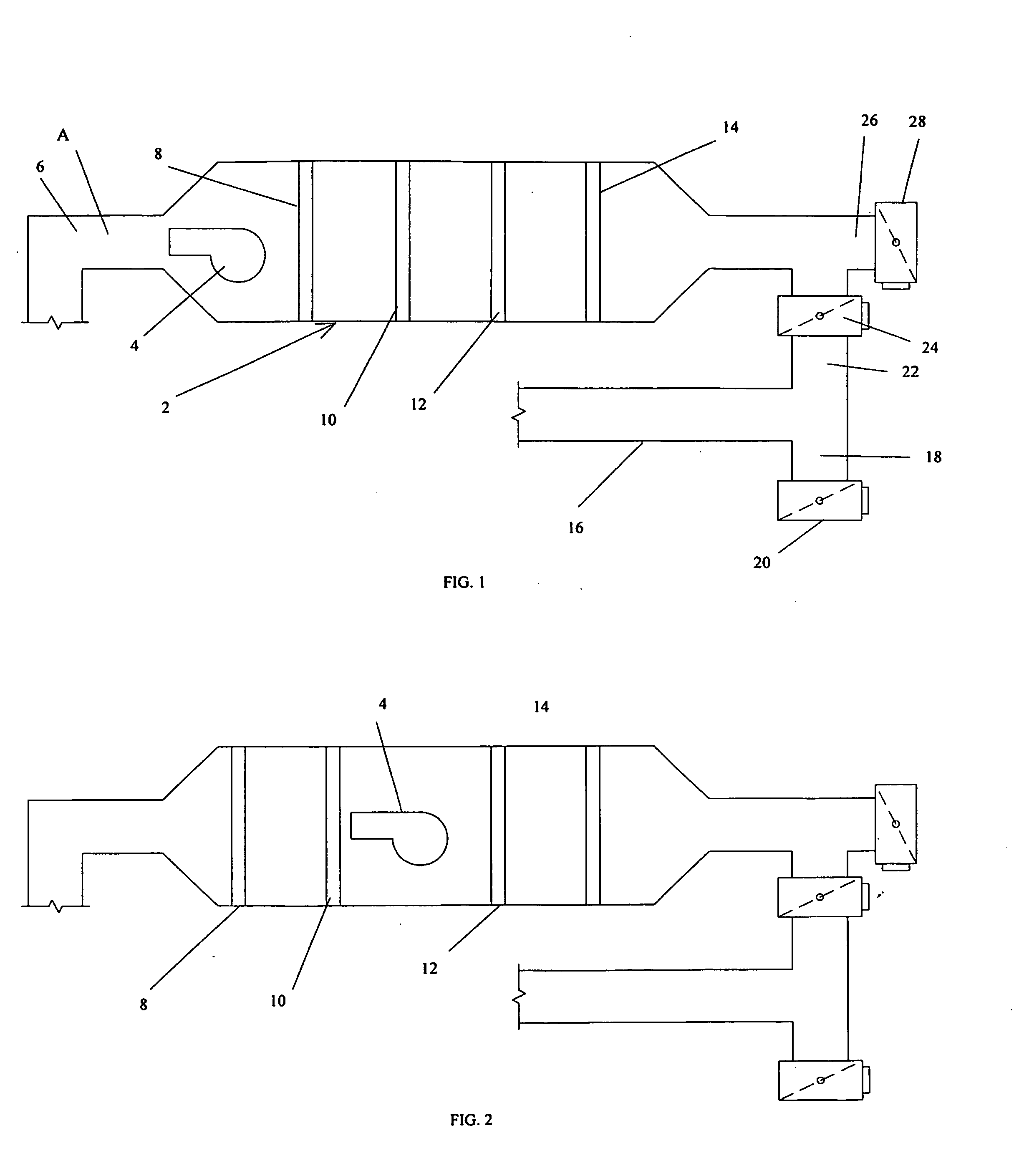Method for measuring HVAC efficiency
a technology of hvac efficiency and measurement method, which is applied in the direction of heating types, instruments, nuclear elements, etc., can solve the problems of reducing the efficiency of an hvac system, poor maintenance of ducts and equipment, and many residential systems do not have e/a or o/a options, so as to reduce the heat transfer between a heating coil and system air, accurately determine the volumetric flow rate, and increase the efficiency of the heating coil
- Summary
- Abstract
- Description
- Claims
- Application Information
AI Technical Summary
Benefits of technology
Problems solved by technology
Method used
Image
Examples
Embodiment Construction
[0022]Referring to the drawings, FIGS. 1 and 2 there are shown schematic views of pull-through and push-through HVAC systems. These Figures are intended to be representative of typical HVAC systems and to show the most commonly found elements within those systems. It is the method of analysis of such systems which is considered to be the invention rather than the systems themselves. The method of the instant invention analyzes and evaluates various elements of such systems including, for example, heating coils, cooling coils, and filters; but the method should work equally well with any element which causes a change in the enthalpy of the system air between the upstream side of the element and the downstream side of the element.
[0023]Now referring to FIG. 1, a schematic view of a typical pull-through HVAC system is shown. A treatment node 2 is ordinarily located in an area which allows relatively easy access, but is usually totally enclosed inside a duct. A fan 4 is located near the...
PUM
 Login to View More
Login to View More Abstract
Description
Claims
Application Information
 Login to View More
Login to View More - R&D
- Intellectual Property
- Life Sciences
- Materials
- Tech Scout
- Unparalleled Data Quality
- Higher Quality Content
- 60% Fewer Hallucinations
Browse by: Latest US Patents, China's latest patents, Technical Efficacy Thesaurus, Application Domain, Technology Topic, Popular Technical Reports.
© 2025 PatSnap. All rights reserved.Legal|Privacy policy|Modern Slavery Act Transparency Statement|Sitemap|About US| Contact US: help@patsnap.com



